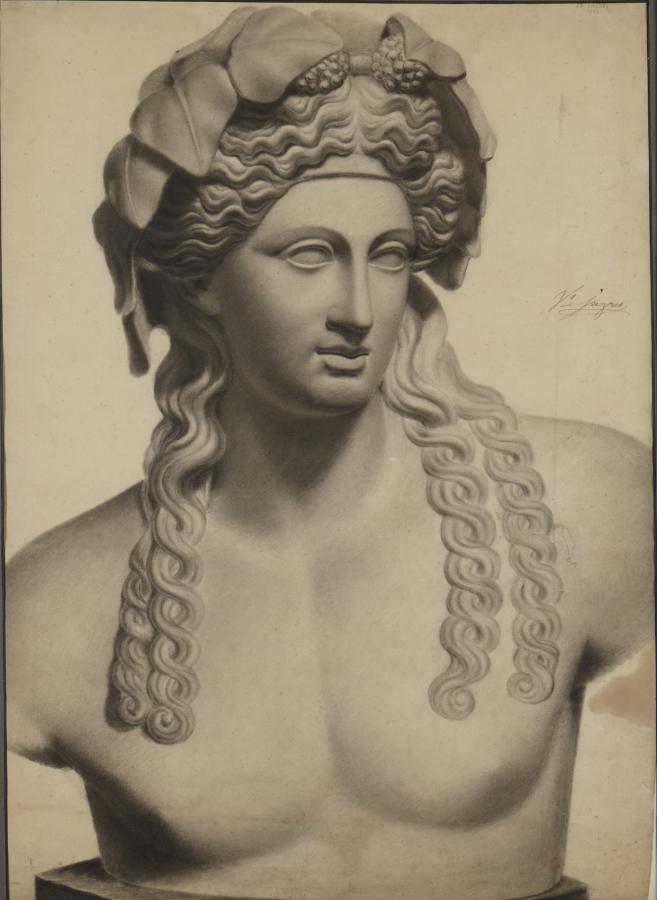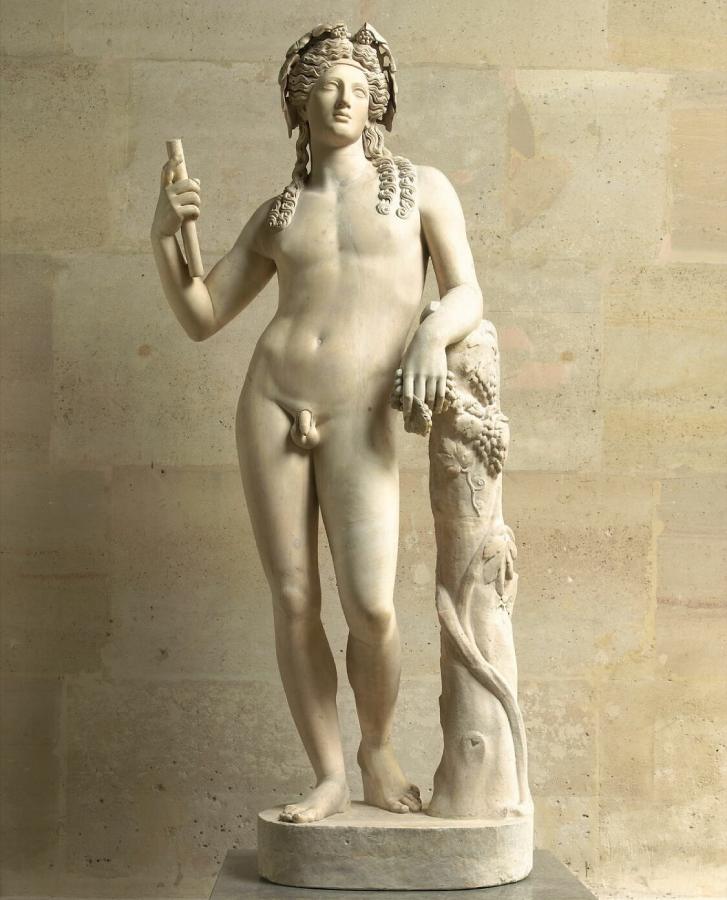Ingres, Jean Auguste Dominique (1780-1867)
Statue dite “Bacchus Richelieu” (The so-called “Bacchus Richelieu”)
1793
Charcoal with stumping slightly accented with black chalk, 70 × 53 cm
Princeton University Art Museum, Princeton
Ingres‘s early academic training in Toulouse is reflected in this finished drawing after a plaster cast, or dessin de bosse—the prerequisite stage in the study of the human figure, before the académie, or drawing from the live model. The bust derives from a full-length ancient Roman statue commonly called the “Bacchus Richelieu” after its celebrated seventeenth-century owner, the Cardinal Richelieu. The statue was seized from Richelieu’s descendants during the French Revolution and entered the collection of the Musée du Louvre by 1794, when the first casts were produced. Ingres demonstrated not only exceptional skill but also originality in this standard academic exercise in three-dimensional modeling, creating an imaginative illusionistic effect that endows the plaster surface with the sheen and luster of marble. The premature date of 1793 was probably inscribed on the sheet by the artist in his later years. (PUAM)
Statue called “Bacchus Richelieu” (adaptation of a Praxitelean type). Dating: end of the 1st quarter of the 2nd century AD. J.-C. – beginning of the 2nd quarter of the 2nd century AD. AD). Collector: Cardinal de Richelieu (Musée du Louvre, collection du Palais Richelieu).
See also:
• Richelieu, Armand Jean du Plessis de (1585-1642)

